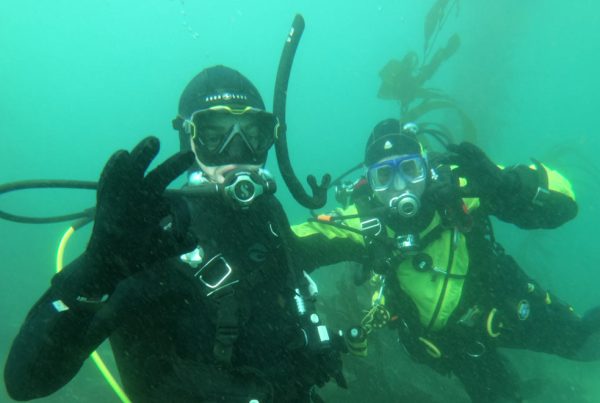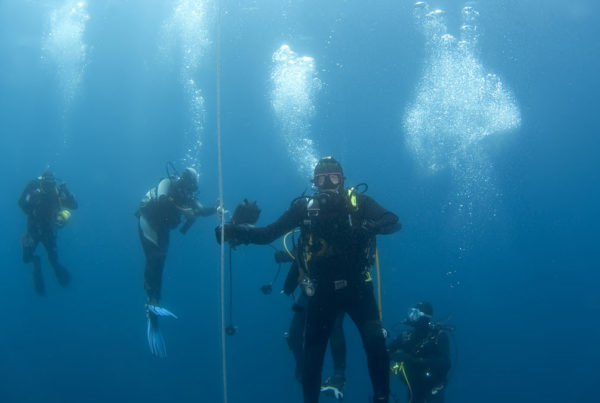When I first started diving, I was a lousy dive buddy. Glen, my first dive partner reminded me of it often. Predive checks?
Nope. I got in the water first and descended quickly. I was often nowhere to be found. But the worse violation was that my flailing arms and legs often collided with my defenseless buddy, dislodging his mask, regulator and whatever. Glen go so fed up that on one particular dive that he hauled-off and punched me, underwater, right in the mask — hard! I got the message!
Are you an offish dive buddy? If you have trouble keeping a dive buddy, even from dive to dive, you might have a problem. Do you often lose your dive buddy? Perhaps you are the one getting lost. A good dive buddy is like any relationship — it must be cultivated with respect, communication, care, and mutual goals. It is also a “system” and, like any system, there are procedures, protocols, outlines, etc.
My buddy protocol improved the more I dived. It was either that or dive alone! The Los Angeles County Advanced Diver Program, which emphasizes the value of the buddy system, not just for safety but diving enjoyment, gave me my best training as dive buddy. Here are some things I learned from them and through experience:
Have common goals. Hunters generally do not make good dive buddies for photographers. There is one exception, however. One buddy puts aside his goals for the dive. The hunter could become a model for one dive and the next, the photographer can hold the game bag.
More important than common goals is cooperative goals. The photographer often does better with a model and/or spotter (somebody that helps find subject material). Lobster hunters benefit. If a lobster lair has a “back door,” one diver can drive the bug toward the other diver. Assistance in measuring and bagging a feisty lobster is also always welcome.
Share Your Catch/Photos: If you are going to cooperate with a buddy for a common goal, share the benefits of those goals. As much as possible, split your seafood catch 50/50. Share photographic prints and if your photos gain notoriety, credit as well.
Dive side by side. Do not hover above or below your buddy. That’s a good way to kick or be kicked. It is also surprisingly hard to find you. Another bad place is to be in front or behind. Again, somebody is going to get kicked, lost, or left behind.
Decide on a leader. Some buddy teams do not need a “leader,” but they are rare. This need not be a domination thing. Just alternate between dives. Some buddy teams, on the other hand, are content with more permanent “leader-follower” roles. This works only if the leader is always considerate and mindful of the follower’s wants, safety and position in the water.
Plan your dive. Dive your plan. It’s and old adage but it works, especially with dive buddy relations. No point in hitting the bottom and trying to go separate directions. Plan details as well. Plan things like safety stop times; what tank p.s.i. will be when you start back to the boat or beach; and what tank pressure to ascend. Briefly cover basic hand signals as well.
Follow through with pre-dive buddy checks. Ultimately, each diver is solely responsible for his or her own gear, but it doesn’t hurt to have the extra layer of checking and rechecking. Pre-dive checks need only take a few seconds and include air on and proper pressure, proper placement of gear and a quick familiarization with your buddy’s gear, including style and location of weight release, and location of alternate air source.
Most of all, enjoy your buddy relationship. You are going to share some incredible experiences! A second set of eyes will only enhance those adventures.










